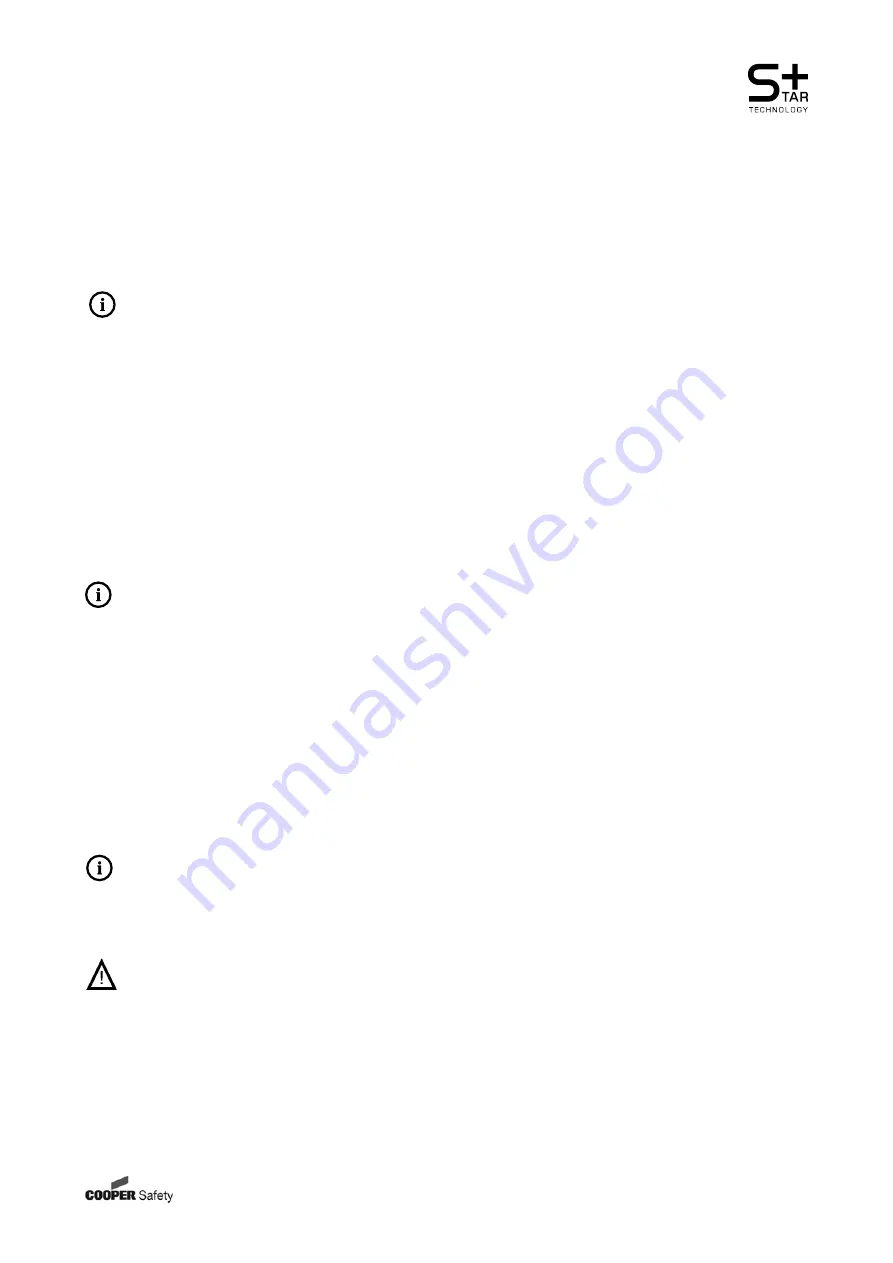
CEAG Notlichtsysteme GmbH
37
Installation
Assembly and Operating Instructions
Automatic Test System AT-S
+
with STAR
+
Technology
Connecting the cables for the mains supply to the AT-S
+
control cabinet:
Ensure that the system and feeders are isolated and locked out!
Connect the earth conductors to the PE terminal block (pos. 5).
Connect the neutral conductors to the N-terminal block (pos. 4).
Connect the load conductors to the L-terminals (pos. 7) on the disconnector
For single-phase operation, a load-current cable only is connected, and the input terminals (pos. 7) on the discon-
nector are jumpered.
6.4.2 Connection to mains of substations AT-S
+
S
AT S
+
S substations are supplied from the power supply of their associated AT-S
+
system (pos. 2). An outgoing
distributor (part no. 400 71 347 160) can be used for three sinlge-phase supplies or one three-phase supply.
Connecting the cables for the mains supply to a AT-S
+
S.. substation:
Ensure that the system and feeders are isolated and locked out!
Run the feeders to/in the AT-S
+
C.. control cabinet and in its routing system and to/in the control cabinet of the
AT-S
+
S.. (pos. 8).
Connect the earth conductor (PE-conductor) to the terminal block (pos. 5)
Connect the neutral conductor to the terminal block (pos. 4)
Connect the L conductors to the terminals on the outgoing feeder (pos. 2)
The mains supply is connected in the control cabinet as described in section 6.4.1.
To assist operations, outgoing distributors can be pulled forward off the busbar when the lock on the upper en-
closure wall is released. Once the outgoing circuits have been connected, the outgoing distributor can be pushed
back in position on the busbar with slight pressure and locked in place.
6.5 Connection and installation of internal modules
Control unit, DC/DC converter and AC supply are plugged onto a module support. The circuit assemblies are
installed on DIN rails.
For simple installation/disassembly, connections with the support modules are via pluggable screw terminal blocks
that can be plugged onto or removed from the fronts of the modules.
Fixed terminals are used with circuit modules due to the current load of the connection terminals. Connection
cables of the terminals are applied to the terminal strip in the upper area of the switching cabinet. Assignment is
via number codes on the module and on the terminal block.
The connection of external inlet and outlet lines is via this terminal block row in the upper area of the switching
cabinet.
NOTES:
The circuit numbers used in the displays of the AT-S
+
controller and the displayed switch outputs of the modules
are assigned by the choice of slots on the subracks.
To ensure that replaced modules function correctly under the controller they must first be identified, activated
and their parameters set up with controller software.
ATTENTION!
Never fit or remove SU S
+
modules in the
O
n
condition! Deactivate a SU S
+
module at the CU-S
+
controller
before removing or re-fitting it, e. g. for testing. For dismantling or modification work the controller must
be disabled.
Summary of Contents for Ceag AT-S+ C0
Page 76: ...400 71 860 177 XXX 07 12 WK...












































